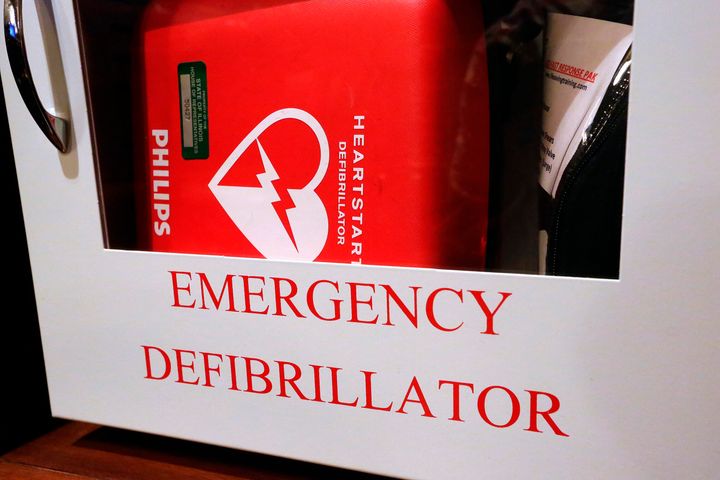
The decommissioned phonebox outside my local corner shop has been turned into a defibrillator station.
That’s part of a broader BT and The Community HeartBeat Trust scheme to get more life-saving devices within easy reach of the public ― if someone has a heart attack and both CPR and a defibrillator are used within three minutes, survival rates can be as high as 70%.
But giving credence to a St John’s Ambulance spokesperson’s fears, it turns out I’m not actually sure how and when to use the life-saving device.
“Ideally, there will be an accessible defibrillator in each community but, it’s important that their provision goes hand-in-hand with training,” they told The Guardian.
Despite living so close to a Public Access defibrillator, I had no idea that something as simple as chest hair can affect the effectiveness of the process.
How does chest hair affect defibrillator use?
According to St John’s Ambulance Australia, “chest hair can hinder the shock strength delivered to the casualty.”
“The electrical pads need to be placed directly on the skin to ensure the full extent of the shock is received,” they add.
This is especially true of thicker, denser chest hair.
St John’s Ambulance UK adds that “Some defibrillators are supplied with razors. If you are responsible for maintaining a defibrillator, ensure a razor is available as part of the rescue kit.”
You should shave a person’s chest if their hair is getting in the way of good skin contact with the defibrillator.
I’ll definitely check my local Public Access defibrillator to see if a razor is included. If not, it’s worth contacting the person responsible for its maintenance.
How should I actually use a defibrillator?
St John’s Ambulance has a handy video explaining how and when to use the device.
If you’re around someone else, ask them to call 999 first; if you’re alone call 999 (or 112) yourself and set your phone onto speaker as you start to treat them.
Do CPR while on the phone and/or until you get access to a defibrillator. Do not leave the person who’s had a cardiac arrest to find a defibrillator.
Once you have access to a defibrillator, place the first pad below the collarbone on the upper right, and the second on the lower left side. Some pads have a sensor that goes under the hands of the chest compressor.
The defibrillator will analyse the heart rhythm and either prompt a shock or advise you to continue CPR, so you don’t need to worry about “using it wrong” or shocking a casualty for no reason.
Ensure no one is touching the casualty during analysis or when a shock is delivered. Continue CPR as instructed, even if no shock is required.
If the casualty starts breathing or shows signs of responsiveness, put them in the recovery position but leave the defibrillator attached. Monitor their breathing and be ready to start CPR again if necessary.